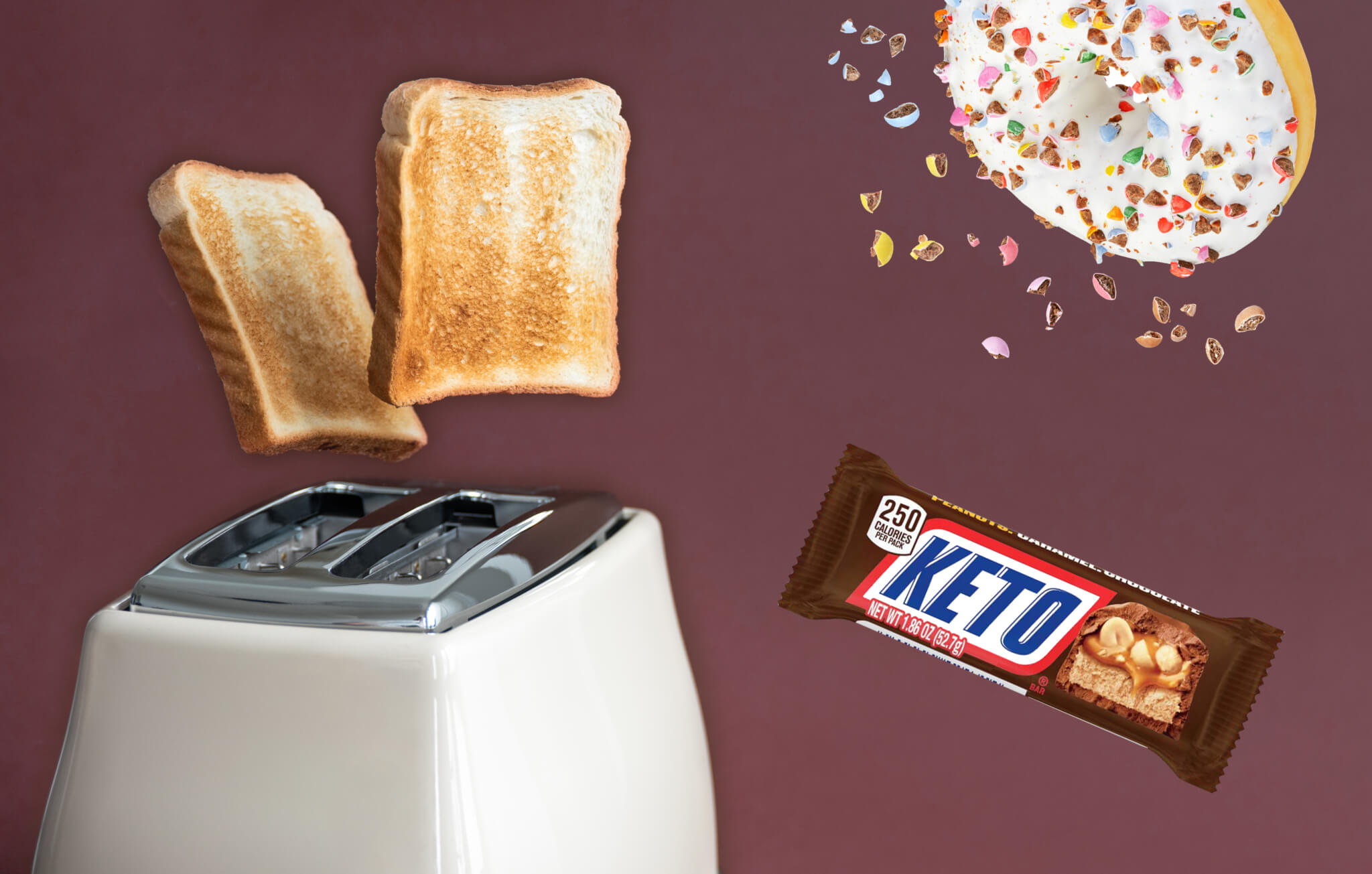As keto becomes more popular, packaged foods and products labeled “keto” or “low carb” have been popping up all over. But with more and more products to choose from, it has become harder to tell which ones are worth choosing. Here are some tips for sticking to health, keto friendly foods and avoiding the fakes.
The rules and regulations: It’s important to know that the terms “keto” and “ketogenic” on packaging are not regulated by the FDA at this time—unlike the term “gluten-free” which has a set definition and criteria that must be met. This means that manufacturers are basically working on the honor system when they label foods keto. Many companies choose to set a high standard and adhere to it, but others may take advantage of this fact to misuse the word in their labeling. This is why research is so important. Remember that educating yourself is always the most important factor in choosing what you buy.
Read the labels: The first step in shopping for any packaged food should always be to read labels. This is an important habit to develop no matter how you eat. If you aren’t in the habit of reading ingredient lists and nutritional information, you may be surprised what you will learn when you start doing so. Pay attention to the kinds of ingredients that are used, the serving size, and nutrition information.
Do a little math: It’s always a good idea to look at the total carbohydrate count on any food even if you are using net carbs. A high total carb count will tell you that there may be a lot of sweeteners or fiber in the product, but it can also mean there are sugars in the food. Make sure the net carb count stacks up against the total carb count. Sometimes there are mystery sugars remaining that aren’t accounted for in the net carb count.
Become a sugar sleuth: Be on the lookout for hidden sugars! Some products labeled “keto” still sneak sugars in under the radar. Small amounts of natural sugars aren’t always a problem, but they certainly can be, and sometimes the amount isn’t that small. Although there are many names for sugar, it will often be found in the form of sucrose, dextrose, fructose, or any word that ends in the letters “ose.” You’ll also want to keep an eye open for ingredients like maltodextrin, sorbitol, and maltitol.
Watch out for fillers: While a product may technically be acceptable on keto, if it’s almost completely made of sweeteners, starches, and fibers, it may still negatively impact blood sugars and lead to digestive distress or other unpleasant symptoms. Eating too much of these non-nutritive foods can edge out foods with more nutritional value that should be prioritized in any diet.
If it seems too good to be true: The old adage still holds: if something seems too good to be true, it probably is. Keto friendly foods are delicious and wonderful for the most part, but let’s be honest, if a “keto” food looks and tastes exactly like its carby counterpart, it might be too good to be true. Trust your senses and your intuition. Sometimes just one look at a food in the package will tell the truth.
Check that serving size: Serving size can make or break a food. Take a serving of ice cream for instance. If the nutritional values on a pint of ice cream are given for a very small portion, but you end up eating several times that portion, it may end up not being all that “keto.” Be realistic about the portions you are eating and how that is affecting the nutrition (or lack thereof) and calories that you are taking in.
True enthusiasm is hard to hide: It takes a lot of hard work and dedication to make a high-quality food product of any kind, especially for something as unique as keto. Any company that has done the hard work of creating a product that fills a specific need well, usually wants to shout it from the mountain tops. Look for labels, and websites that have a lot to say about the inspiration behind their product and how it’s made. Obviously, companies can’t give all their secrets away, but they should be happy to supply information about their products. There’s nothing wrong with keeping a proprietary recipe a secret of course, but a reputable business with a trustworthy product should be happy to reassure you about what is in the product and why it is there. The inspiring story should be backed up with clear labeling and concise nutritional information as well.
Look out for fake recipes: The popularity of keto has also led to a steep rise in keto recipes available in print and digital form, but please proceed with caution here, too. I have spotted many recipes that include ingredients like coconut sugar, honey, and sweet potato that are perfectly acceptable foods for many people and popular in the paleo movement but are not low in carbohydrates. It would seem in the rush to capitalize on the keto trend, many creators are rushing to tag anything and everything keto. Unfortunately, many of them seem to be confused about what keto really is and end up misleading recipe readers, even though they may not be doing so intentionally. Head to a trusted source for recipes first. If you see a recipe that looks good, but you aren’t sure, do some research before you take it at face value.









Leave A Comment